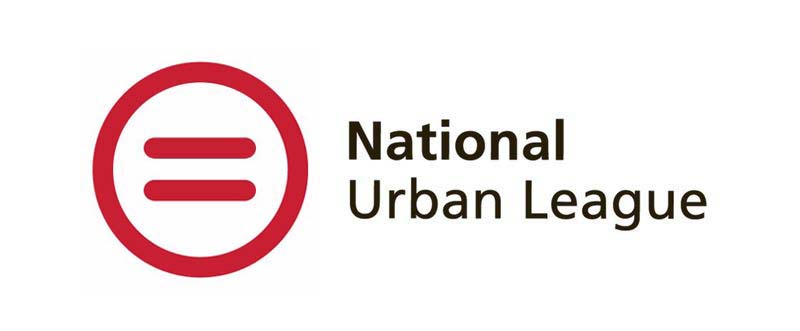American job seekers are embracing that remote work-from-home life. A 2023 Pew Research Study found that 35% of U.S. workers with remote jobs work from home all the time. And 58% of white-collar workers want to work remotely at least three days a week, according to USA Today.
So, if you’re fortunate enough to have a full-time remote work-from-home job, where should you work from? USA Today reports that Colorado has the highest percentage of remote workers, followed by Washington, Arizona, and Oregon. But you may want to drill down even more to find which city is the best fit for working remotely.
If you have the option to work from home, living in a smaller, more affordable city rather than a dense metropolis may be worth considering. We scored over one hundred small cities in the U.S. on a variety of criteria to determine the small best cities for remote work.
- Methodology: How We Ranked the Cities
- The Best Small Cities for Remote Work
- Comparing the Best Small Cities for Remote Work
- Finding the Best City to Work Remotely
Methodology: How We Ranked the Cities
We selected 134 U.S. principal cities of metropolitan statistical areas with populations between 100,000 and 200,000. We then scored and ranked those cities on nine criteria relevant to remote workers. These factors consider the feasibility of working from home, affordability, and local entertainment.
To quantify a city’s friendliness to remote workers, we included high-speed internet availability, noise level, public library funding, the unemployment rate, and the number of snack and non-alcoholic beverage bars per capita, which includes coffee shops.
In terms of affordability, we incorporated the percentage of residents spending 30% or more of their income on housing, the median list price of homes, and the average of current prices across economic goods and services (price level relative to the national level). Finally, we considered a city’s arts, entertainment, and recreation establishments per capita to ensure remote workers have ample opportunities for entertainment outside of work hours.
Here’s a detailed breakdown of our data sources:
- Percentage of residences with 250+ Mbps download speed broadband availability (Source: FCC National Broadband Map, June 2022)
- Combined aircraft and road noise level (Source: Esri and U.S. Department of Transportation National Transportation Noise Map, 2018)
- Percentage of residents spending 30% or more of their income on housing (Source: U.S. Census Bureau, 2021)
- Public library funding (Source: Public Libraries Survey, 2020)
- Median list price of homes (Source: Zillow, October 2022 release)
- Price level as a percentage of the national price level (Source: Bureau of Economic Analysis, 2020)
- Arts, entertainment, and recreation establishments per 10,000 residents (Source: U.S. Census Bureau — County Business Patterns, 2020)
- Snack and non-alcoholic beverage bars, including coffee shops, per 10,000 residents (Source: U.S. Census Bureau — County Business Patterns, 2020)
- Unemployment rate (Source: U.S. Census Bureau, 2021)
We normalized these factors by converting them to percentiles. We then averaged these normalized scores to get an overall score for each city. Note: For some factors, a higher value is better; for others, a lower value is better. We took these different directions into account when computing scores.
For the number of arts, entertainment, and recreation establishments per capita and the number of snack and non-alcoholic beverage bars per capita, we used data available at the county level as a proxy for values at the place (city) level. For places that span multiple counties, we aggregated the values across counties to approximate place-level values.
To obtain median home list price and the price level as a percentage of the national price level, we used data available at the metropolitan statistical area (MSA) level. We replaced a small number of missing values for library funding, the percentage of people spending 30% or more of their income on housing, and median home price with the median across all the cities that have a value for that indicator.
The Best Small Cities for Remote Work
1. Davenport, Iowa
- Percentage of residences with 250+ Mbps broadband availability: 97%
- Combined aircraft and road noise level: 38.44
- Percentage of residents spending 30% or more of their income on housing: 27%
- Public library funding per capita: $58.88
- Median list price of homes: $161,300
- Price level as a percentage of national price level: 91.44%
- Arts, entertainment, and recreation establishments (per 10,000 residents): 4.47
- Snack and non-alcoholic beverage bars, including coffee shops (per 10,000 residents): 2.69
- Unemployment rate: 5.9%
Davenport, Iowa earned the top spot on our list of the best small cities for remote work in part because of its exceptionally low real estate prices, with the median list price of a home being $161,300. Only 27% of Davenport residents spend 30% or more of their income on housing, which is among the lowest of all the cities we examined. It also scored well in terms of its price level relative to the national level (91.44%).
However, Davenport is only in the 53rd percentile for unemployment rate.
2. Carmel, Indiana
- Percentage of residences with 250+ Mbps broadband availability: 93.42%
- Combined aircraft and road noise level: 37.53
- Percentage of residents spending 30% or more of their income on housing: 22.1%
- Public library funding per capita: $90.37
- Median list price of homes: $272,000
- Price level as a percentage of national price level: 94.71%
- Arts, entertainment, and recreation establishments (per 10,000 residents): 5.64
- Snack and non-alcoholic beverage bars, including coffee shops (per 10,000 residents): 1.73
- Unemployment rate: 2.1%
Carmel, Indiana takes the second spot on our list because it has a lower percentage of people spending 30% or more of their income on housing than 99% of cities we examined. Its unemployment rate (2.1%) is also lower than unemployment in 99% of cities in our ranking. Carmel also scored decently well on noise level, with lower aircraft and road noise than 93% of cities in our ranking.
However, only 93.4% of residences in Carmel have access to broadband with speeds of at least 250 Mbps, which puts the city in the lower third for that metric. In addition, Carmel has a relatively low number of snack and non-alcoholic beverage bars per capita, including coffee shops. If you prefer the ambiance of a cafe when you work remotely, you may wish to live somewhere with more options.
3. Topeka, Kansas
- Percentage of residences with 250+ Mbps broadband availability: 96.87%
- Combined aircraft and road noise level: 40.57
- Percentage of residents spending 30% or more of their income on housing: 27.8%
- Public library funding per capita: $174.42
- Median list price of homes: $194,667
- Price level as a percentage of national price level: 89.99%
- Arts, entertainment, and recreation establishments (per 10,000 residents): 3.02
- Snack and non-alcoholic beverage bars, including coffee shops (per 10,000 residents): 1.51
- Unemployment rate: 3.4%
Scoring well on median home list price ($194,667) and unemployment rate (3.4%), Topeka ranks better than 95.1% and 96.3% of other cities on those metrics, respectively. Topeka also ranks moderately well for library spending per capita and price level relative to the national level.
Though Topeka is affordable and has better-funded libraries than most other cities on our list, it falls short in terms of arts, entertainment, and recreation establishments per capita as well as snack and non-alcoholic beverage bars per capita, scoring in the bottom third for both factors.
4. Lafayette, Louisiana
- Percentage of residences with 250+ Mbps broadband availability: 94.92%
- Combined aircraft and road noise level: 40.85
- Percentage of residents spending 30% or more of their income on housing: 30.9%
- Public library funding per capita: $96.53
- Median list price of homes: $249,000
- Price level as a percentage of national price level: 91.58%
- Arts, entertainment, and recreation establishments (per 10,000 residents): 4.96
- Snack and non-alcoholic beverage bars, including coffee shops (per 10,000 residents): 2.73
- Unemployment rate: 4.3%
Lafayette, Louisiana has a lower price level relative to the national level than 82.8% of cities we examined, at 91.57%. It’s also in the 80th percentile for both library funding per capita ($96.53) and the median list price of a home ($249,000). The unemployment rate in Lafayette (4.3%) is lower than 81.3% of the cities in our dataset.
Nearly 95% of residents in Lafayette have access to broadband with speeds of 250 Mbps or greater, which is middle-of-the-road compared to the rest of the cities. It also scored poorly for noise level, with a combined aircraft and road noise level greater than 68% of cities we examined.
5. Metairie, Louisiana
- Percentage of residences with 250+ Mbps broadband availability: 99.43%
- Combined aircraft and road noise level: 43.71
- Percentage of residents spending 30% or more of their income on housing: 28.5%
- Public library funding per capita: $164.78
- Median list price of homes: $307,167
- Price level as a percentage of national price level: 96.86%
- Arts, entertainment, and recreation establishments (per 10,000 residents): 3.63
- Snack and non-alcoholic beverage bars, including coffee shops (per 10,000 residents): 2.52
- Unemployment rate: 4.1%
The small city of Metairie, Louisiana, is part of the New Orleans metropolitan area, and it is a two-hour drive from the No. 4-ranked city, Lafayette. Metairie is the highest-scoring city in our dataset for broadband availability, with 99.43% of residences having access to 250 Mbps or greater download speeds. It also scores in the 91st percentile for library funding per capita and has a lower unemployment rate than 89.18% of cities we examined. Only 28.5% of Metairie residents spend 30% or more of their income on housing, a lower percentage than 81.7% of cities in our dataset.
Unfortunately, Metairie has one of the worst combined aircraft and road noise values (43.71), with only 14.18% of the cities in our dataset having a higher value.
6. Overland Park, Kansas
- Percentage of residences with 250+ Mbps broadband availability: 90.73%
- Combined aircraft and road noise level: 39.48
- Percentage of residents spending 30% or more of their income on housing: 24.5%
- Public library funding per capita: $187.96
- Median list price of homes: $273,333
- Price level as a percentage of national price level: 94.70%
- Arts, entertainment, and recreation establishments (per 10,000 residents): 4.61
- Snack and non-alcoholic beverage bars, including coffee shops (per 10,000 residents): 1.97
- Unemployment rate: 3.5%
Overland Park, Kansas, a suburb of Kansas City, is a one-hour drive from No. 3-ranked Topeka. Some factors that helped Overland Park rank highly are its low percentage of people spending 30% or more of their income on housing, its high library funding per capita, and its low unemployment rate. It also ranked relatively well in terms of the median home list price ($273,333).
Overland Park did not score well for broadband availability, with only 90.73% of residences having access to 250 Mbps or greater download speeds. It has less than two snack and non-alcoholic beverage bars per 10,000 residents, leading it to score in the bottom half for this metric.
7. Columbia, Missouri
- Percentage of residences with 250+ Mbps broadband availability: 95.08%
- Combined aircraft and road noise level: 37.99
- Percentage of residents spending 30% or more of their income on housing: 33.9%
- Public library funding per capita: $95.22
- Median list price of homes: $291,375
- Price level as a percentage of national price level: 92.46%
- Arts, entertainment, and recreation establishments (per 10,000 residents): 4.3
- Snack and non-alcoholic beverage bars, including coffee shops (per 10,000 residents): 2.23
- Unemployment rate: 5.5%
Columbia, Missouri’s best-ranking metric is noise level, with a lower noise level than 86.6% of cities in our dataset. It is in the top 25% of cities in terms of higher library funding per capita and a lower price level compared to the national level. It also scored well for median home list price.
In terms of broadband availability, Columbia is near the middle of the pack, with 95.08% of residences having access to 250 Mbps or greater download speeds.
8. Sioux Falls, South Dakota
- Percentage of residences with 250+ Mbps broadband availability: 97.09%
- Combined aircraft and road noise level: 43.09
- Percentage of residents spending 30% or more of their income on housing: 24%
- Public library funding per capita: $41.70
- Median list price of homes: $321,600
- Price level as a percentage of national price level: 94.09%
- Arts, entertainment, and recreation establishments (per 10,000 residents): 7.76
- Snack and non-alcoholic beverage bars, including coffee shops (per 10,000 residents): 2.11
- Unemployment rate: 1.8%
Sioux Falls, South Dakota scored very well on the percentage of people spending 30% or more of their income on housing, with only 24% of residents spending that much. The city also has a high number of arts, entertainment, and recreation establishments per capita at 7.76 per 10,000 residents. Over 97% of residences have access to 250 Mbps download speeds or greater, a higher value than 82.09% of cities in our dataset.
Sioux Falls does not rank as well in terms of noise level, for which it has a higher value than 84% of cities we examined. It’s middle-of-the-pack in terms of snack and non-alcoholic beverage bars per capita, and it’s in the bottom 40% of cities for library funding.
9. Fargo, North Dakota
- Percentage of residences with 250+ Mbps broadband availability: 97.06%
- Combined aircraft and road noise level: 41.72
- Percentage of residents spending 30% or more of their income on housing: 30.8%
- Public library funding per capita: $40.96
- Median list price of homes: $279,633
- Price level as a percentage of national price level: 94.0%
- Arts, entertainment, and recreation establishments (per 10,000 residents): 6.29
- Snack and non-alcoholic beverage bars, including coffee shops (per 10,000 residents): 2.71
- Unemployment rate: 4.2%
Fargo, North Dakota earned the ninth place in our ranking of the best small cities for remote work. It scored rather strongly in terms of arts, entertainment, and recreation establishments per capita (6.69), a higher value than 88.06% of cities we examined. It also has a relatively low unemployment rate and relatively high percentage of residences with access to 250 Mbps or higher download speeds.
Fargo has a somewhat poor noise level, scoring in the bottom 25% for this metric. It also has lower public library funding per capita than 64% of the cities in our dataset.
10. Rochester, Minnesota
- Percentage of residences with 250+ Mbps broadband availability: 94.11%
- Combined aircraft and road noise level: 38.92
- Percentage of residents spending 30% or more of their income on housing: 24.6%
- Public library funding per capita: $75.42
- Median list price of homes: $314,933
- Price level as a percentage of national price level: 94.73%
- Arts, entertainment, and recreation establishments (per 10,000 residents): 4.05
- Snack and non-alcoholic beverage bars, including coffee shops (per 10,000 residents): 2.21
- Unemployment rate: 4.2%
The final spot on our list goes to Rochester, Minnesota. Rochester has a lower percentage of people spending 30% or more of their income on housing than 97% of the cities we examined (24.6%). Its 4.2% unemployment rate is lower than 85.82% of the cities.
Rochester scores near the middle in terms of arts, entertainment, and recreation establishments and snack and non-alcoholic beverage bars per capita. Its high-speed broadband availability (94.11% of residences) is also lower than 65% of the cities we examined.
Comparing the Best Small Cities for Remote Work
Finding the Best City for Working Remotely
Moving to a smaller city to save on expenses may be enticing, but the decision of where to relocate is a big one, even for remote workers.
Make sure that a small city has enough to offer related to your interest areas before moving there, advises Jennifer Nau, founder of Campus2City, an agency that provides real estate guidance to new graduates.
“The biggest complaint I’ve heard from recent grads who move to a small city is that there’s ‘nothing to do,’” Nau says. “Take the time to research the area to ensure there are activities you enjoy.”
Living in a small city allows you to save more and reach your financial goals faster, she says. You’re also more likely to afford more living space, such as an extra bedroom to use as an office. However, if you’re a new grad, there may not be many people in smaller cities at the same stage in life as you.
Research internet coverage prior to making a move and speak to a current resident about their experience if possible, Nau advises. Also, make a budget based on your projected take-home pay and sort out paperwork like proof of income before starting your housing search, she says.
“Finding a new place to live in a new city can be very stressful,” Nau says. “Preparing your paperwork and potential co-signer [for an apartment lease] prior to getting started with your search will make the process much simpler and faster.”
Experience a day-in-the-life in exciting roles at top companies through Forage’s free job simulations.
Image credit: Depositphotos.com


